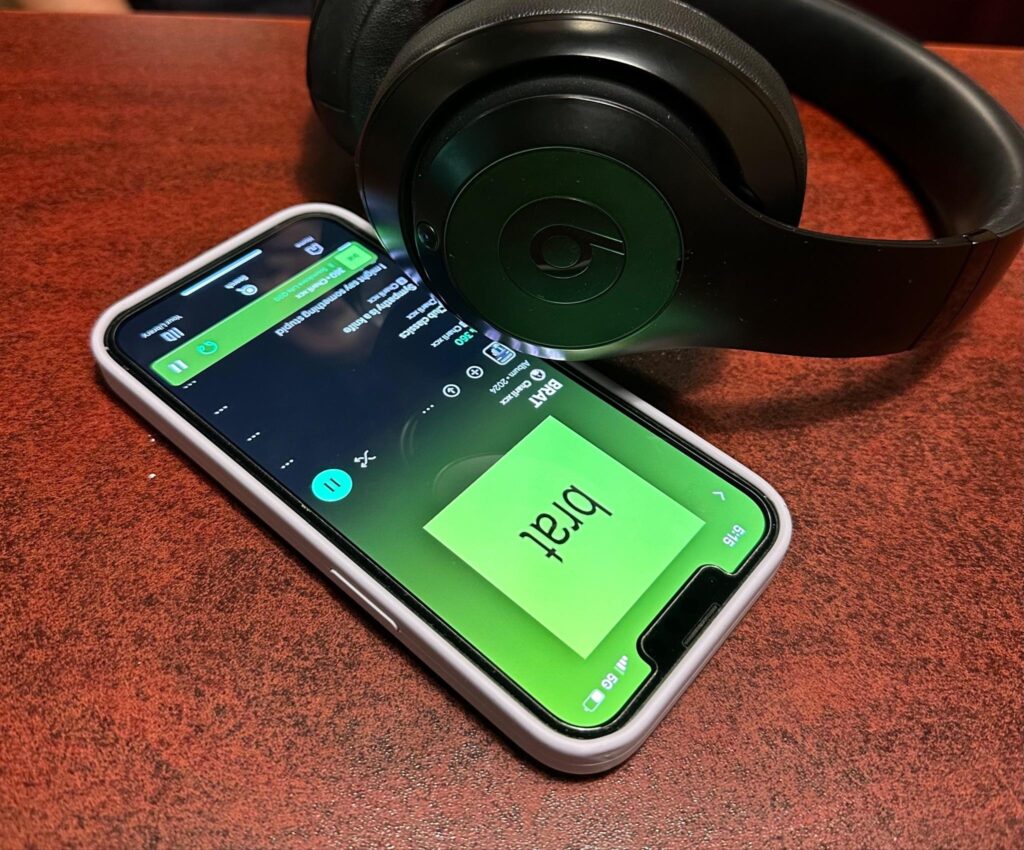Brat summer: Charli xcx and the cultural influence of brat
Brat summer is over, according to creator Charli xcx, but will it ever truly die?
The international phenomenon swept millions off their feet and plunged them head first into the “dirty girl” aesthetic that xcx’s sixth studio album, brat cultivated. And just because the season has run its course doesn’t mean brat’s lasting effects are gone. Lime green, cigarettes, black eyeliner, nose-drugs, white shirts, and going braless have been capitalized on for three months and don’t seem to be going away anytime soon.
Charli’s iconic low-resolution album cover with simple arial font portrays the stripped back work on her newest 15 song album. Simple, clear, poisonously catchy lyrics that capture the rawness of real life flood through each song, emulating party culture and paving a new path of internet content, including the widespread “Apple” dance that spread like wildfire overnight.
“I didn’t want any metaphors – like at all,” xcx said in an interview with Vulture. “I wanted this record to feel like I was having a conversation with the listener in a true way. I could say that to you in the back of a cab on the way to a club. Like tonight? I want to dance with A.G. [Cook].”
Cook – Charli’s creative director and album producer, has seen the vision to completion with the artist. The pair have worked together on numerous projects since 2016, but this is the first to explore more explicit themes.
Clubs are a hot topic throughout brat. The second song on the album, “Club Classics,” has a dance beat that was clearly made for a nightclub, boasting lyrics that say, “Put your hands up and dance / Yeah, I’m gonna dance all night, that’s right / All night, never gonna stop ‘til the morning light.”
Throughout her album, xcx writes about topics that are underrepresented for thirty-somethings. As a thirty-two year old woman, her lyrics are about going out to parties, struggling with comparisons to other women, and how to know if and when to have children. For many, Charli created a self of belonging with brat, acknowledging that women can maintain a sense of fun-loving youth as they get into ages that are socially regarded as times of calmness and settling down. In fact, Charli had an idea of making brat culture something that you don’t have to prove yourself to be a part of, she explains in a Billboard article.
“With brat, it was really interesting to just do things for the fan base and make that feel exclusive — but then once you’re in the club, it’s actually very inclusive. Actually, everyone can join the club. It’s just that everybody joins at slightly different times in slightly different ways — whether that be on my private Instagram posts, or the 400-person Boiler Room, or a random cinema screening of a new music video in L.A., or a text message from me.”
A large talking-point of xcx’s album has been the drug-forward language, which advertises the use of hard drugs and cigarettes. Despite the language in her lyrics, like “bumpin’ that”, and “Should we have a little line?”, the brat it-girls featured in xcx’s marketing don’t necessarily promote these themes. Julia Fox, who has been front and center in Charli’s marketing, is a recovered alcoholic, and has been open with the public about her journey.
The it-girls of brat have been integral to conveying that the album is for everyone. Shown in the music video for “360” are non-binary model Richie Sazam, transgender model Hari Nef, designer Sakura Bready, YouTuber Quen Blackwell, and actors Chloë Sevigny and Rachel Sennott. This inclusivity and representation make brat something that goes beyond just the straight, white girl.
Brat has raised important societal points, like the idea that it is okay to let loose and be true to what you want to do. Remember, being yourself is so brat.


